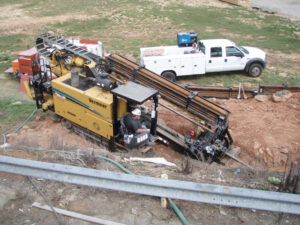 Horizontal Environmental Wells and conventional vertical wells have similarities, but there is no debating the fact that horizontal environmental wells have the following advantages over traditional wells.
Horizontal Environmental Wells and conventional vertical wells have similarities, but there is no debating the fact that horizontal environmental wells have the following advantages over traditional wells.
- Horizontal wells can be installed in areas with subsurface obstructions such as utilities and underneath buildings, lagoons, wetlands, railroad tracks, runways, and more. Horizontal environmental wells can be installed where vertical wells cannot.
- Longer and wider plumes are created by natural flow patterns in typical soil strata. Horizontal wells can achieve greater efficiency of delivery or recovery in many of these because of their ability to take advantage of the geometry and flow direction.
- Horizontal environmental wells can be installed along the base of an aquifer. Thus, horizontal wells are more suitable for the recovery of DNAPLs, because they can be more accurately installed around a fluctuating water table. Horizontal wells can be used to prevent further downward migration through a confining layer.
- Horizontal wells have a greater zone of influence and more efficient remediation choice.
- Fewer horizontal wells may be needed, because of the larger screen area in contact with the impacted media. Few wells mean fewer pumps, less piping, and lower O&M costs.
- Normal business activities can continue during the installation of horizontal environmental wells.